
Our cells perform several essential functions, including generating energy, removing waste, repairing themselves, and carrying out specialized tasks based on their type. For these functions to be carried out successfully, cells need to move ions and electrolytes. PEMF therapy gives your cells an extra “boost,” promoting the movement of these ions and electrolytes.
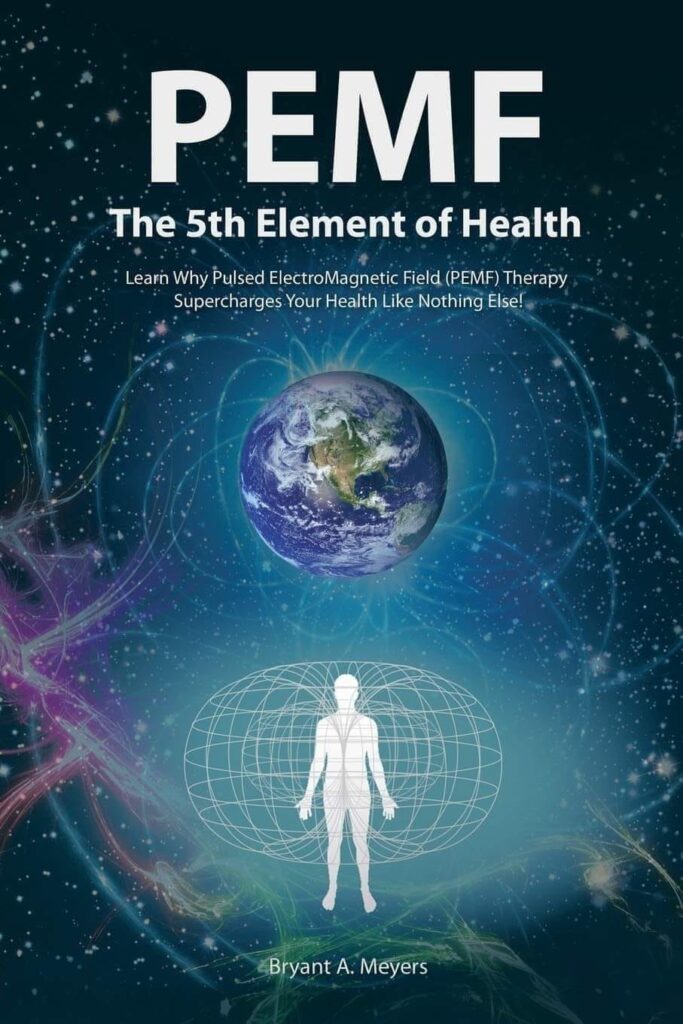

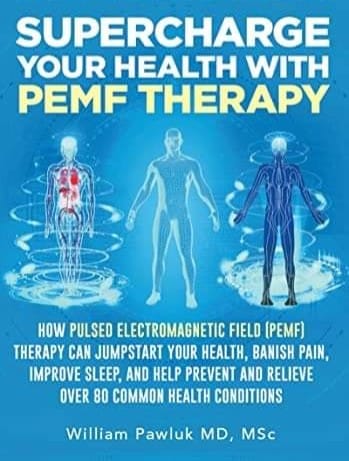
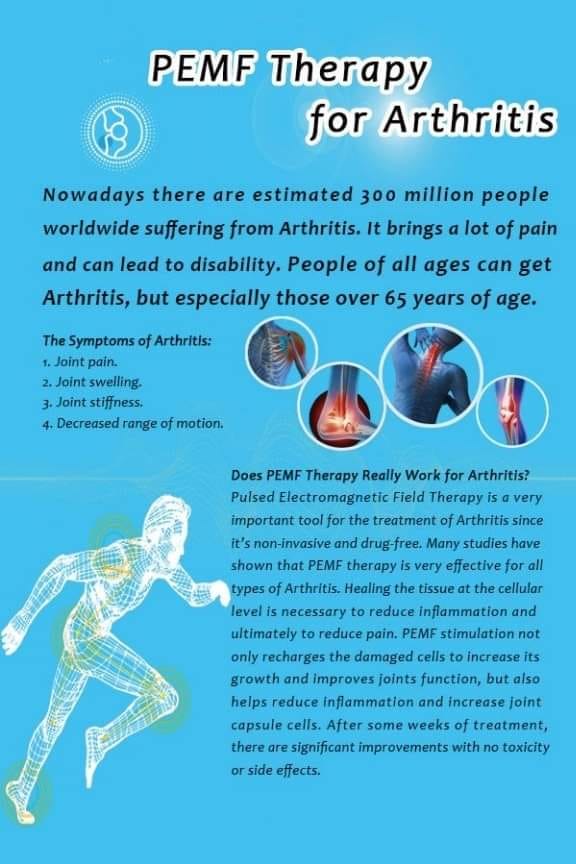

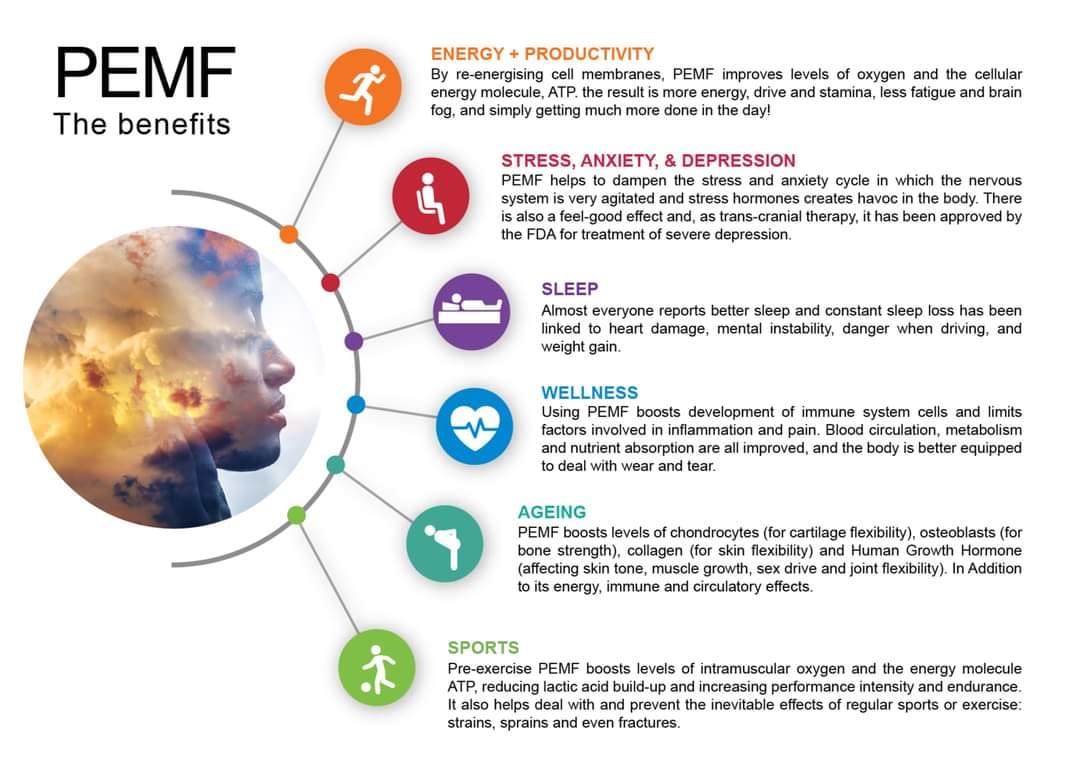
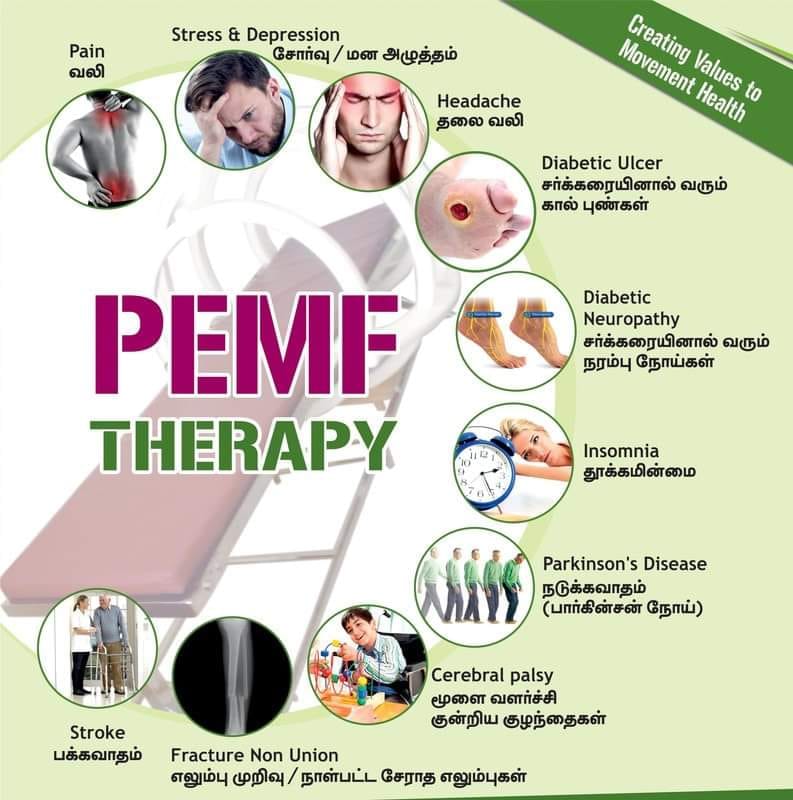
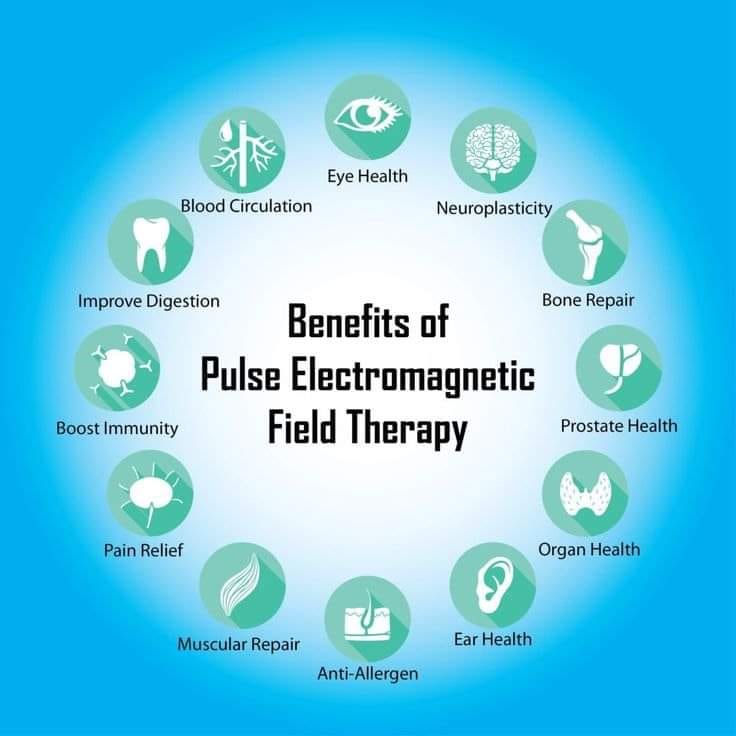

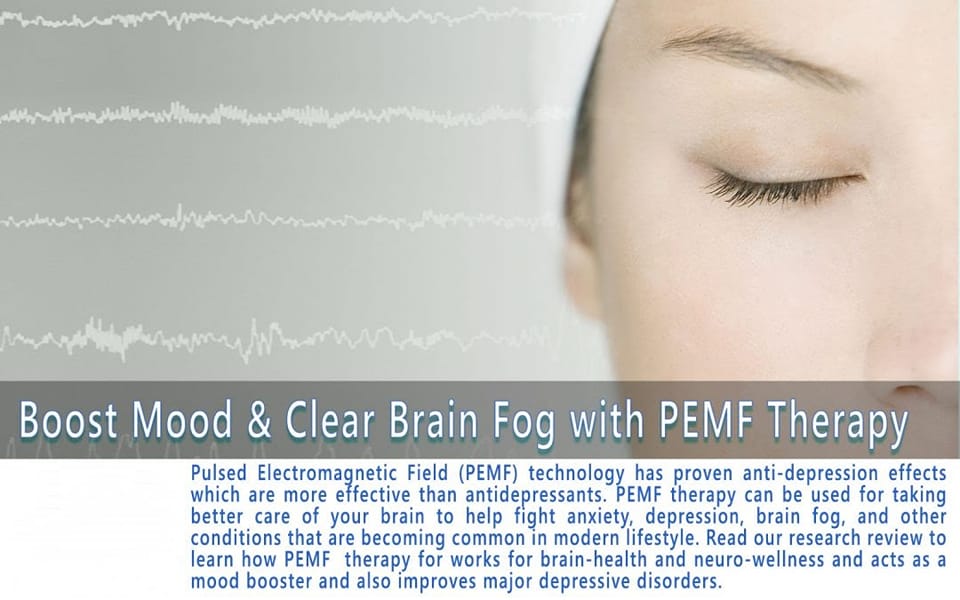
Numerous studies have explored the effectiveness of Pulsed Electromagnetic Field (PEMF) therapy for treating depression. Frequencies around 10 Hz have demonstrated long-term neurodegenerative effects. PEMF therapy boosts motivation without the need for antidepressants, supports overall wellness, and may even extend lifespan.
Transcranial Direct Current Stimulation (tDCS) and Repetitive Transcranial Magnetic Stimulation (rTMS) have been extensively studied for their effects on dementia and cognitive decline related to conditions such as Alzheimer’s and Parkinson’s disease. PEMF therapy represents a new generation of electrotherapy, offering higher effectiveness and a non-invasive approach, as PEMFs can penetrate deeper into the body. This therapy is convenient for use both at home and in therapy centres. Remarkably, the same device that improves sleep can also aid in neuro-rehabilitation, pain relief, stress recovery, and wound healing.
In contrast, sleep medications often lead to residual drowsiness and can be dangerous with long-term use, leaving individuals feeling listless and unfocused in the morning, which often results in an increased reliance on caffeine. However, with a proper PEMF therapy routine, many users report experiencing clarity and energy immediately upon waking. Typically, just 30 minutes of BioBalance PEMF therapy before bedtime is sufficient. Whole-body and brain stimulation through PEMF therapy may alleviate issues like brain fog and depression.
PEMF therapy enhances brain health and helps combat anxiety, depression, brain fog, and other common issues in modern lifestyles. Research and reviews indicate that PEMF therapy is effective as a mood enhancer and in treating major depressive disorders. Studies show that the anti-depressive effects of PEMF technology can surpass those of traditional antidepressants. The FDA has approved PEMF therapy for treating depression in both the United States and Canada, and it is widely accepted in Eastern Europe and the European Union.
When applied using devices such as PEMF pads or pillows, the effects of PEMF therapy can mimic those of transcranial magnetic stimulation (rTMS). By stimulating the brain with pulsating magnetic fields, PEMF therapy improves circulation and corrects neurochemical imbalances that contribute to depression.
PEMF therapy enhances cellular respiration and nutrient absorption, helping to balance hormonal functions related to serotonin (which promotes calmness, serenity, optimism, and self-confidence), dopamine (which fosters excitement, motivation, and energy), and cortisol (the stress hormone that activates our response when needed).
Incorporating regular PEMF therapy into your routine can be convenient and offer long-term benefits. It enhances both mental and cognitive performance, extending beyond mere relaxation. Additionally, PEMF therapy alleviates inflammation in brain tissues, similar to its effects on other body parts. Brain inflammation can contribute to brain fog, cognitive decline, depression, stress, and anxiety. Research indicates that, with the right PEMF frequencies, it may be possible to reverse these challenges and improve brain health in as little as two weeks.
Research suggests that brain function noticeably begins to decline around age 40. Furthermore, nearly 17 percent of individuals over 65 may experience mild cognitive impairments, such as difficulty concentrating, finding the right words, focusing, or misplacing everyday items, like car keys.
Recent studies indicate that brain fog—a condition lying between normal functioning and serious disorders like dementia or Alzheimer’s disease—may indeed be reversible with PEMF therapy.

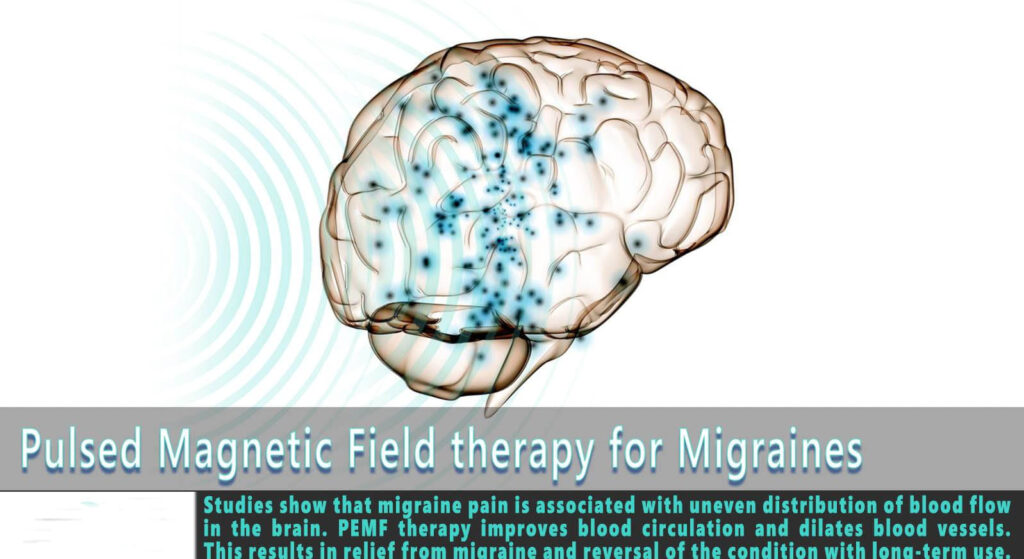
Studies have examined the effects of low-frequency, low-intensity PEMF on headaches, migraines, sleep disorders, stroke rehabilitation, and pain management.
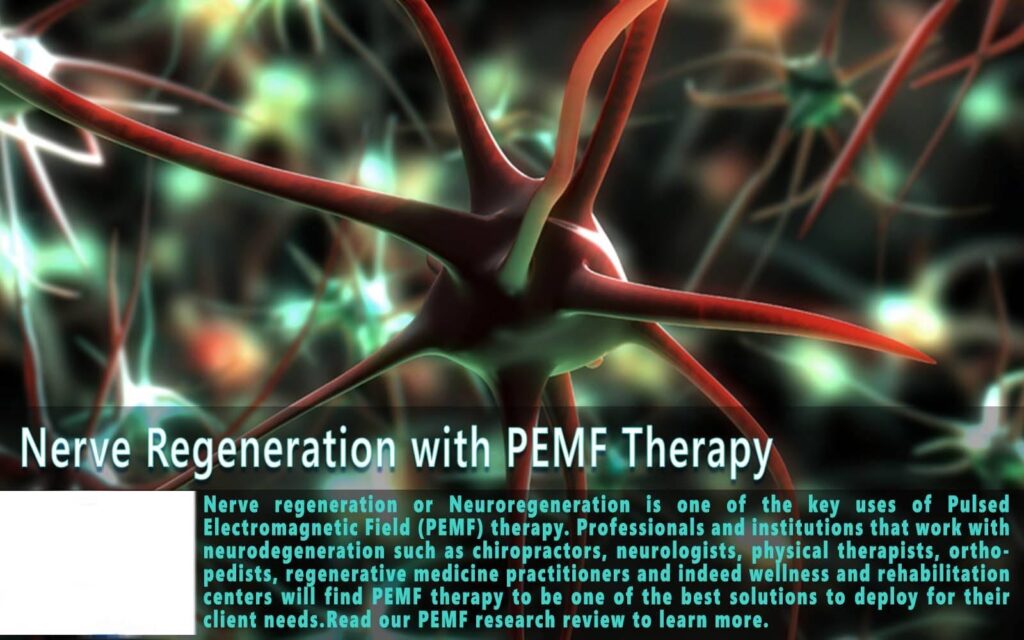
Professionals and institutions involved in treating neurodegeneration, such as chiropractors, neurologists, physical therapists, orthopedists, and practitioners in regenerative medicine, along with wellness, senior care, and rehabilitation centers, will find PEMF therapy to be one of the most effective solutions for their clients’ needs.
Individuals suffering from various neurological issues—including back pain, sciatica, cervical pain, herniated or ruptured discs, multiple sclerosis, strokes, arthritis, Parkinson’s disease, and Alzheimer’s disease—can benefit significantly from pulsed electromagnetic field therapy.
In 2002, NASA’s PEMF scientist, Thomas J. Goodwin, reported that applying 10 Hz PEMF therapy to neural tissues resulted in a 400% improvement in regeneration. It is now understood that astronauts do not go to space without PEMF therapy, as a pulsed magnetic field is essential for the proper functioning of our body’s bioelectric system.
PEMF therapy can stimulate nerve regeneration, often evidenced by a temporary increase in pain followed by quicker long-term relief, even in chronic pain conditions. For anti-aging effects, PEMF therapy is a powerful tool that surpasses any nerve regeneration supplement. With prolonged use, research indicates that pulsed electromagnetic field therapy can lead to life-changing recovery without any side effects or risk of infection. Although PEMF therapy is highly effective and safe, awareness of its benefits is only now growing, leading more institutions, doctors, and baby boomers to embrace this innovative regenerative tool.

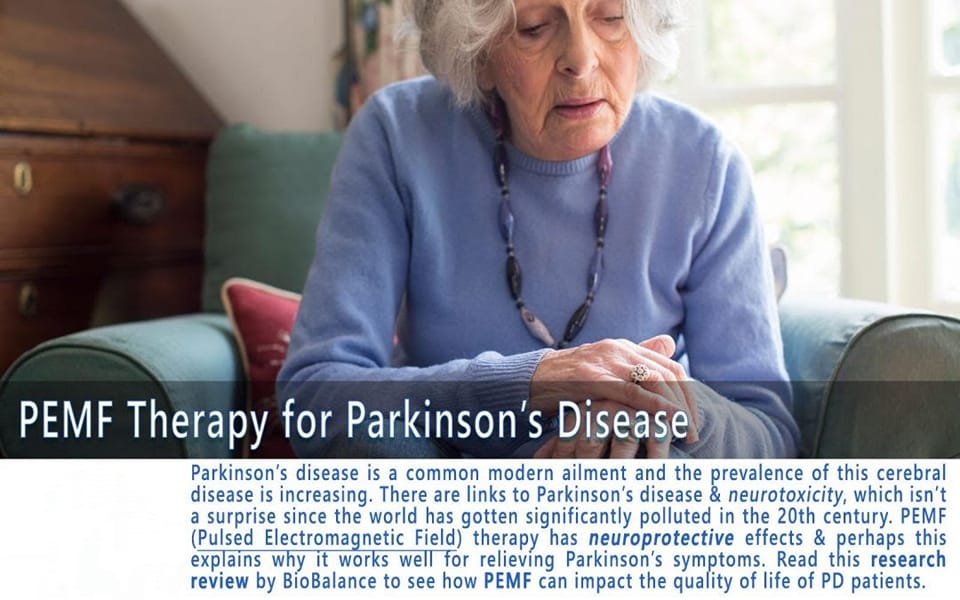
Pulsed Electromagnetic Field (PEMF) therapy has been repeatedly studied and applied in clinical settings as an alternative treatment for Parkinson’s disease (PD). This therapy is recognized for its neuroprotective effects, which may help alleviate the symptoms of Parkinson’s. To better understand how PEMF therapy works and its benefits, it’s important to first explore what Parkinson’s disease involves.
Parkinson’s disease is a common neurological disorder, and its incidence has been rising. Research links Parkinson’s disease to neurotoxicity, often attributed to significant pollution experienced during the 20th century.
According to the American Association of Neurological Surgeons, Parkinson’s disease is a progressive brain disorder caused by the degeneration of nerve cells in a brain area known as the substantia nigra. This degeneration disrupts hormonal and neurotransmitter functions, leading to symptoms such as tremors, rigidity, decreased flexibility, slowed movement, and impaired balance and coordination. Experts believe that this area of the brain becomes hyperactive due to the loss of dopamine in individuals with Parkinson’s.
PEMF therapy involves the application of safe, non-invasive pulsating magnetic fields to promote regenerative and functional improvements. When these fields are applied to the brain—a process known as transcranial magnetic stimulation—they enhance cellular oxygenation by improving circulation and stimulating mitochondria (the powerhouses of cells). These effects help accelerate cellular regeneration and repair.
PEMF therapy devices have evolved over more than six decades of research, supported by thousands of studies and numerous clinical trials. Various terms are used to describe brain-stimulating magnetic fields, including T-PEMF (transcranial PEMF), PEMF, TMS (transcranial magnetic stimulation), rTMS (repetitive transcranial magnetic stimulation), and EMS (Electro-Magnetic Stimulation). While these technologies share similarities, they primarily differ in intensity and coil design. Therefore, when researching the treatment of Parkinson’s disease with PEMF therapy, it is essential to consider studies involving all these electromagnetic therapy technologies.
Several studies indicate that PEMF therapy improves both gross and fine motor functions, as well as cognitive abilities. Pulsed magnetic fields exhibit significant molecular effects that alter the reactivity of molecules (specifically free radicals). A reduction in free radicals can lead to decreased inflammation and a slowdown in age-related degeneration. Moreover, PEMF therapy has been shown to alleviate depression, which affects up to 40% of patients with Parkinson’s disease.
Research on the effects of PEMF therapy for Parkinson’s disease has been published since the early 1990s.
In 1996, Dr. Reuven Sandyk from the Department of Neuroscience at the Institute for Biomedical Engineering and Rehabilitation Services of Touro College in New York treated a 73-year-old patient with a 10-year history of Parkinson’s disease using PEMF therapy. Remarkably, within a week of treatment, the patient experienced a near-complete disappearance of tremors, start hesitation, and freezing of gait. Additionally, the patient regained the ability to draw better and could sign their name again.
In 1999, Dr. Sandyk discovered that AC PEMF therapy improved olfactory function in individuals with Parkinson’s disease. He found that 7 Hz stimulation effectively addressed olfactory dysfunction, a symptom often overlooked in treatment. Improvements in the sense of smell and yawning are significant indicators of disease status, and their enhancement suggests the treatment is effective.
Dr. Sandyk has published multiple studies and is considered a pioneering researcher in exploring the effects of PEMF therapy on Parkinson’s disease. In addition to the findings mentioned, he also noted improvements in speech impairment and restless leg syndrome as additional benefits of PEMF therapy.
A joint research review published in 2015 investigated the mechanisms and therapeutic applications of electromagnetic therapy in Parkinson’s disease. Conducted by reputable researchers from Italy, Mexico, and the UK, the review concluded that PEMFs improve symptoms of Parkinson’s disease, including tremors, slowness of movement, and walking difficulties. It emphasized that PEMF therapy is non-invasive, safe, and enhances the quality of life for patients with Parkinson’s disease. Another extensive review involving 470 Parkinson’s disease patients in 2015 concluded that rTMS effectively improves motor symptoms and tremor control in individuals with the condition.



For general well-being, sexual intimacy is vital since it offers physical as well as emotional advantages. Pulsed Electromagnetic Field (PEMF) treatment is a non-invasive and successful cure for erectile dysfunction (ED) since it can improve prostate health, lower blood pressure, increase happiness, reduce the risk of heart disease, improve sleep quality, and balance hormones. By removing obstructions and boosting blood flow, this treatment helps to repair correct blood vessel operation and improve tissue quality.
Many guys over 50 will find their prostates have grown. The walnut-sized prostate gland generates prostatic fluid, a major constituent of semen. The prostate can reach the size of a lemon by 60, which could constrict the urethra and bladder. PEMF therapy employs energy waves to decrease prostate inflammation and boost blood flow. Enhanced blood flow helps to oxygenate the tissues, foster the development of strong blood vessels, and so lower aberrant tissue development. Enhanced circulation can help to lessen symptoms including frequent and urgent urination, a sense of incomplete bladder emptying, and a diminished urine stream.
By raising nitric oxide levels, PEMF therapy stimulates the synthesis of growth factors, hence decreasing inflammation and enhancing vascular function. Furthermore strengthening nerves, this treatment helps to repair old injuries, improve heart health, and extend lifespan.
Managing Stress
Acting straight on the neurological system, glands, cells, tissues, and organs, PEMF treatment has been demonstrated to alter the body’s stress reactions. By inhibiting the activation of the sympathetic nervous system and adrenal glands, PEMF treatment helps the body better control stress. It might also help to correct emotional responses tied to stress and lower excitability of the neurological system. Long-term PEMF therapy might help the body to adjust and remodel tissues that are too sensitive to ongoing or severe stress, therefore reducing their responsiveness over time.
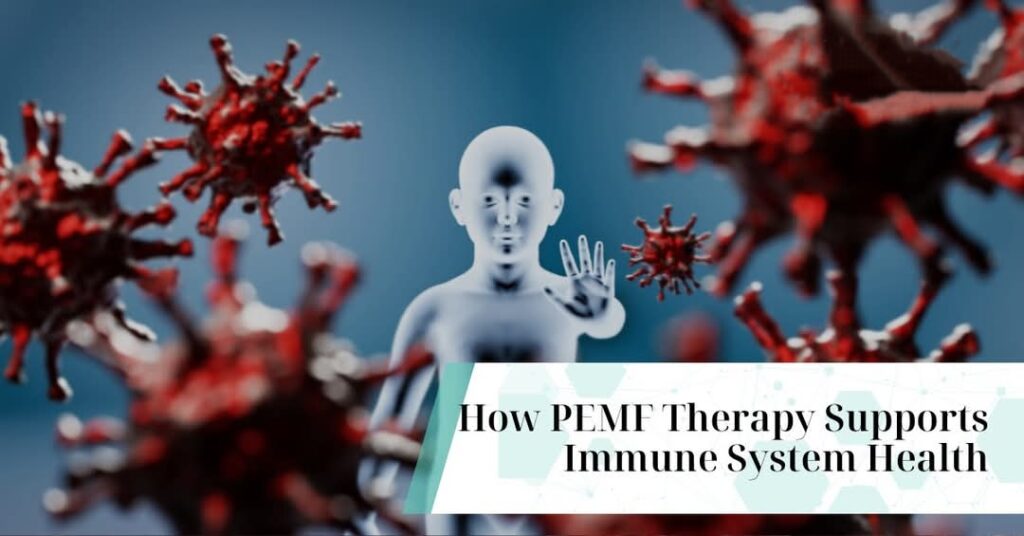
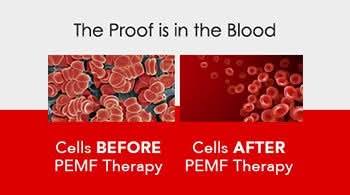
By improving peripheral circulation and oxygenation, PEMF therapy strengthens the body’s own defenses. Stress on our muscles, joints, and organs—all of which are made up of cells, the basic building blocks of life—will cause our bodies damage. Stress and damaged cells lose their electrical charge, which causes less energy, discomfort, inflammation, swelling, stiffness, and finally, disease and sickness.

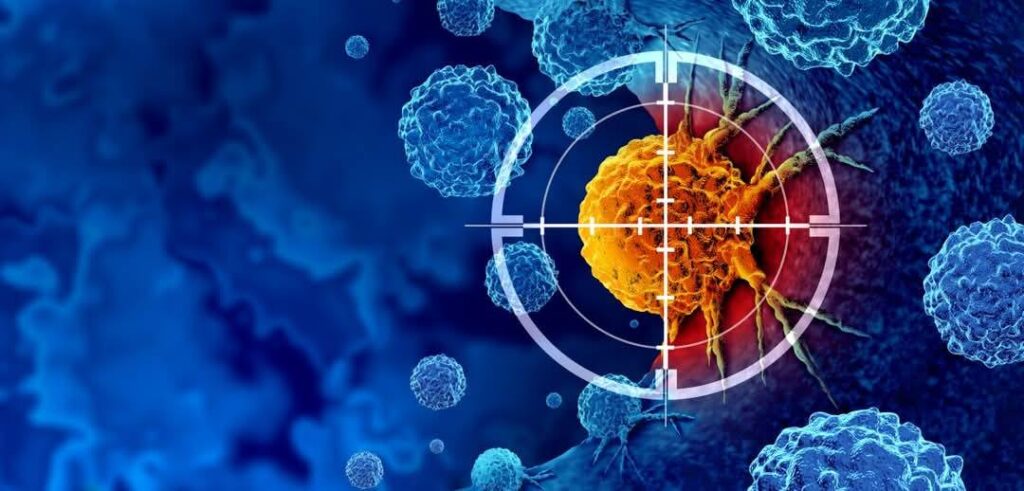
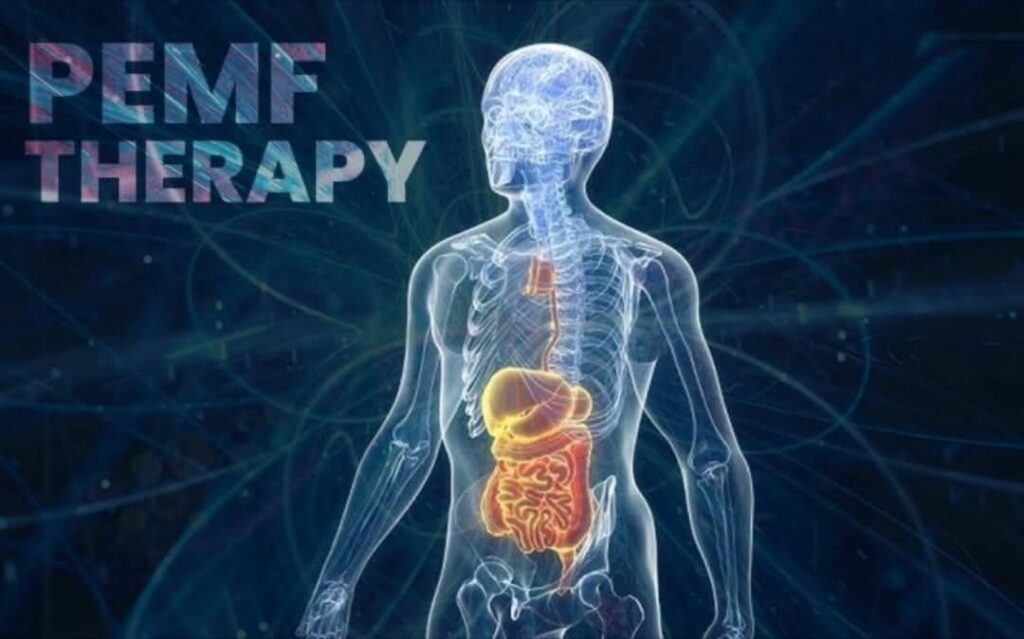
General well-being depends on good digestive health. At the cellular level, PEMF (pulsed electromagnetic field) treatment has a special capacity to help digestion. Electromagnetic fields can activate the body’s “rest and digest” reaction, the parasympathetic nervous system. This important mechanism speeds metabolism and improves digestion. The gastrointestinal tract is formed of cells, just like any other organ; hence, PEMF therapy can successfully treat a great variety of digestive problems. Cells can repair, revitalize, and self-regulate once they are energized. Maintaining a good digestive system depends on combining PEMF treatment with a healthy lifestyle—that is, eating less processed foods, controlling stress, and resolving energetic imbalances at the cellular level.
Many symptoms and diseases can emerge when the digestive system is not working as it should, hence pointing to a compromised gastrointestinal system. Among these conditions are:
– Gastroesophageal Reflux Disease (GERD)
– Gallstones and Celiac Disease
– Crohn’s Disease:
– Ulcerative Colitis
– Irritable Bowel Syndrome (IBS)
– Hemorrhoids, diverticulitis, leaky gut
– Anal cracks
Restoring digestive health depends on resolving these problems.
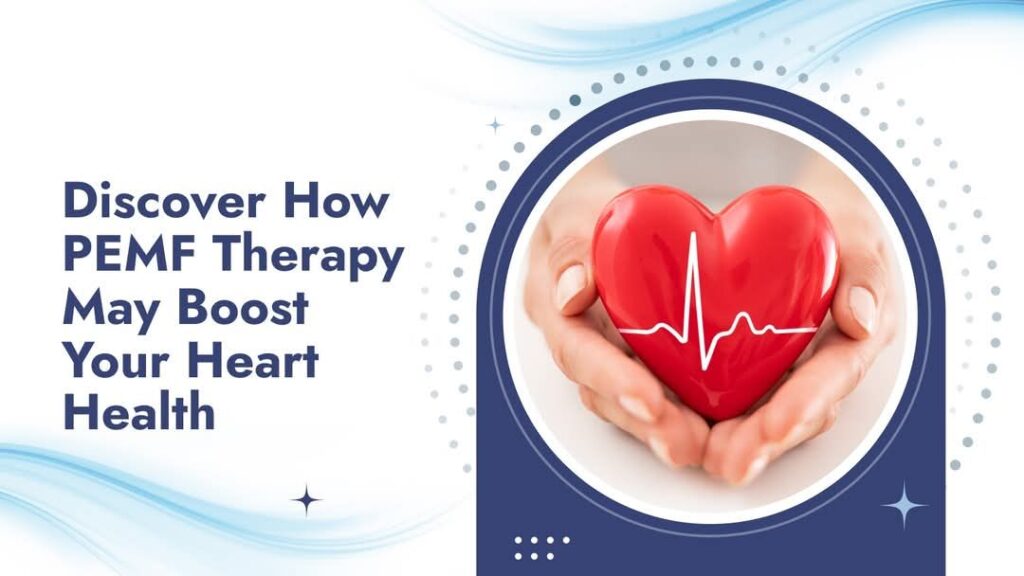
Directly and indirectly, PEMF treatment could improve heart health. Because of how it raises blood pressure and at worst even causes heart attack, stress is a significant risk factor for heart disease. Most people manage stress in damaging ways like binge eating, drinking, and smoking that only increase risk of heart disease; PEMF ® THERAPY is often used to naturally relieve stress and is FDA authorized therapy for stress, anxiety, and depression.
One of the main causes of heart disease is lack of activity, thus being active is required to help to avoid it. By improving mobility and increasing the range of motion, PEMF helps to supplement exercise. Additionally helps to reduce swelling, inflammation and pain.
Another main cause of heart disease is a sedentary lifestyle; hence, physical activity is vital for prevention. By enhancing mobility and range of motion, PEMF treatment can help with physical activity. Furthermore helps to lessen pain, reduce swelling, and lower inflammation. By improving cellular oxygenation and dispersing oxygen throughout the cardiovascular system, PEMF therapy promotes general health.
Preventing, postponing, or reducing symptoms of several physiological disorders is possible using this treatment. Moreover, PEMF treatment helps to improve overall cellular health and supports healthy cell function. Many studies have proven the possible advantages of PEMF therapy for heart health, therefore it is a drug-free, non-invasive choice to improve cardiovascular well-being.

The kidneys are essential organs that act as biological filters, removing metabolic waste from the blood and transferring it to the urinary bladder. These bean-shaped organs perform several critical functions that support overall health, including balancing electrolytes and producing certain hormones.
When kidneys become damaged, the condition can worsen, leading to chronic kidney disease (CKD). Kidney failure represents the final and most severe stage of CKD, often referred to as end-stage renal disease (ESRD). Individuals with kidney failure typically require dialysis or a kidney transplant to survive, as their kidneys function at only 10 to 15 percent of their normal capacity.
The symptoms of early-stage kidney disease can be subtle and challenging to identify. They may include:
– Decreased urine output
– Fluid retention, leading to swelling in the limbs
– Shortness of breath
Early detection and treatment of chronic kidney disease are crucial for preventing progression to kidney failure. Research suggests that Pulsed Electromagnetic Field (PEMF) therapy is a safe and non-invasive option for treating CKD and preventing kidney failure.
How Does PEMF Therapy Work for Kidney Failure?
Chronic kidney disease can progress to kidney failure if kidney damage continues to worsen. PEMF therapy may help lower the risk of kidney failure by effectively addressing CKD.
PEMF therapy can promote the body’s natural healing process of the damaged kidneys. Through the increased motion of ions and electrolytes, PEMF therapy can raise ATP levels and help kidney cells increase their energy by up to 500%. In addition, PEMF therapy can open up the membrane channels of cells to help them absorb enough nutrients and remove metabolic waste easily and quickly. In this way, PEMF therapy can stimulate the damaged kidney cells to rebalance and repair themselves wherever necessary.
PEMF therapy has been shown to reduce inflammation and injury associated with chronic kidney disease by activating A2a receptors. The adenosine A2a signaling pathway is a powerful regulator of anti-inflammatory and immunosuppressive responses. Through these receptors, PEMF therapy facilitates the conversion of macrophages from pro-inflammatory to anti-inflammatory types, promoting the resolution of inflammation and tissue restoration in damaged kidneys. It also enhances the function of podocytes, decreases proteinuria (the presence of excess protein in urine), and reduces pro-inflammatory cytokines in mesangial cells. Furthermore, PEMF therapy helps inhibit renal interstitial fibrosis, benefiting individuals with chronic kidney disease.
In the trial, four volunteers underwent PEMF therapy for 30 minutes three times a day for two weeks while continuing their existing medications without any changes. Researchers analyzed urinary spot collections and found reductions in proteinuria. This observational study demonstrated that PEMF therapy could be a promising option for patients suffering from chronic kidney disease.

Scoliosis is a spinal disorder that affects approximately 3% of the population, with severity levels ranging from mild to debilitating. Although there is no definitive “cure” for scoliosis, several conventional treatments are available, including braces, pain management strategies, and surgery. Integrative medicine offers alternative options that can complement or sometimes replace these conventional treatments. These alternatives may help alleviate pain, prevent the condition from worsening, improve mobility and stability, and promote healing after surgery.
Scoliosis is characterized by a sideways curve or twist in the spine. Typically, the upper (thoracic) spine curves to the right, while the middle (thoracolumbar) or lower (lumbar) spine can curve either to the right or left. The exact cause of scoliosis remains unclear; however, certain conditions, such as cerebral palsy and muscular dystrophy, increase the likelihood of developing this disorder.
Scoliosis is categorized based on the age at which it begins. The most common type is adolescent idiopathic scoliosis, which occurs in individuals aged 10 to 18 with no clear cause. Other types include infantile idiopathic scoliosis (ages 0-3), juvenile idiopathic scoliosis (ages 4-9), and congenital scoliosis, which arises from spinal birth defects. Scoliosis can also develop later in life due to neuromuscular conditions or the degeneration of facet joints in the spine, known as degenerative scoliosis. Nonstructural or functional scoliosis occurs when the spine curves due to misalignments in other parts of the body, such as differences in leg length, and can often be corrected by addressing the underlying issue.
Often, it is others who first notice the development of scoliosis in a person. A curving spine can lead to noticeable signs such as an uneven waist, elevated hips or shoulders, a more prominent shoulder blade, or differences in ribcage appearance when bending over. As the curvature increases, scoliosis can result in:
– Back pain
– Muscle spasms in the back
– Inflammation in back joints and muscles
– Degeneration of intervertebral discs and facet joints
– Reduced range of motion
– Altered movement and gait due to misaligned hips (for example, one hand hitting against the hip while the other swings wider)
– Increased fatigue in the back, hips, and core muscles
– Decreased spinal motion
– Breathing difficulties
– Cardiovascular issues due to structural pressure on the heart
– Lowered self-esteem
Currently, scoliosis is not considered preventable, as most cases are classified as idiopathic. Treatment options vary depending on the severity of the condition, which is assessed according to the degree of spinal curvature. Curves of 10 degrees or less often go unnoticed. If scoliosis is detected, physicians typically recommend check-ups 2 to 3 times a year to monitor the condition.
If the curvature worsens rapidly or reaches 20 degrees, physicians may prescribe some form of intervention. The most common treatment is a back brace. While braces do not realign the spine, they can effectively prevent the curve from worsening. Depending on individual circumstances, a full-time brace (16+ hours daily) or a nighttime brace (8+ hours nightly) may be recommended.
In more severe cases, surgery may become necessary. For children who are still growing and experiencing rapid worsening, one option is a vertebral tethering system. This involves placing screws along the outer edge of the curving spine, with a strong yet flexible cord threaded through them. The cord is gradually tightened over time to straighten the spine. Another surgical option includes placing an expandable rod alongside the spine, which can be mechanically lengthened via remote control as the child grows.
For adolescents and adults who have reached their full height (usually around age 14 for females and 16 for males), spinal fusion is another surgical option. This procedure fuses two or more vertebrae together to prevent further movement and curvature. Bone or similar material is placed between the vertebrae, and metal rods, hooks, and screws are used to stabilize the spine during healing and fusion. This type of surgery is generally reserved for cases where the curvature exceeds 40 to 50 degrees.
While it is encouraging that 90% of individuals with idiopathic scoliosis will not require braces or surgery, it is important to note that those affected by scoliosis can still experience side effects, including pain and mobility challenges.
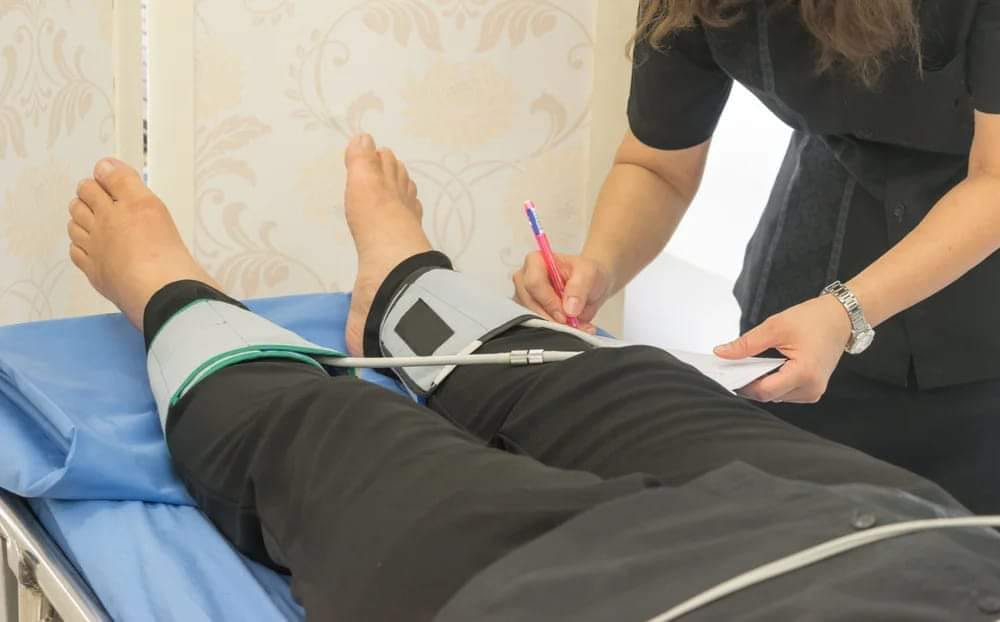

PEMF (Pulsed Electromagnetic Field) therapy uses pulsed magnetic fields targeted at specific areas of the body to promote healing at the cellular level. This therapy effectively addresses back pain, regardless of its underlying cause. Additionally, PEMF therapy can influence pain response centers in the brain, alleviating long-term emotional suffering and enhancing brain function.
Research indicates that PEMFs are both safe and effective for use on the brain, even at high intensities. They can help repair brain tissue and regulate brain frequency functions, calming overactive signals.
Two notable studies have showcased the significant potential of PEMFs in reducing pain among participants with lumbar radiculopathy and whiplash syndrome.
In the first study, researchers examined 192 patients—100 with lumbar radiculopathy (characterized by pressure on a spinal nerve root) and 92 with whiplash syndrome. One group received standard medications, including diclofenac and tizanidine, in conjunction with magnetic field treatment twice a day for two weeks. The other group received only the medications. Results showed that pain relief was significantly greater in the group receiving magnetic field treatments.
In a second randomized controlled clinical trial, researchers evaluated the effectiveness of a PEMF system in managing pain caused by lumbar radiculopathy due to spinal disc disease. Lumbar nerve root compression can lead to radiating pain in the hips, legs, and feet. The study concluded that PEMF therapy is an effective conservative treatment for lumbar radiculopathy resulting from lumbar disc prolapse, successfully reducing nerve root compression.
PEMFs often yield quick and dramatic results in treating acute back pain. Many patients report rapid relief after using a PEMF system. While it is encouraging that acute pain can be alleviated quickly, PEMFs are also frequently utilized for chronic back pain, which is more persistent and can cause significant distress.
PEMFs can greatly enhance the daily lives of patients suffering from chronic back pain. Even if complete pain relief is not achieved, the intensity of the pain can diminish considerably, allowing patients to return to their normal activities. Moreover, PEMFs can be applied to the brain to calm the limbic system, helping to prevent the brain from sending exaggerated pain signals
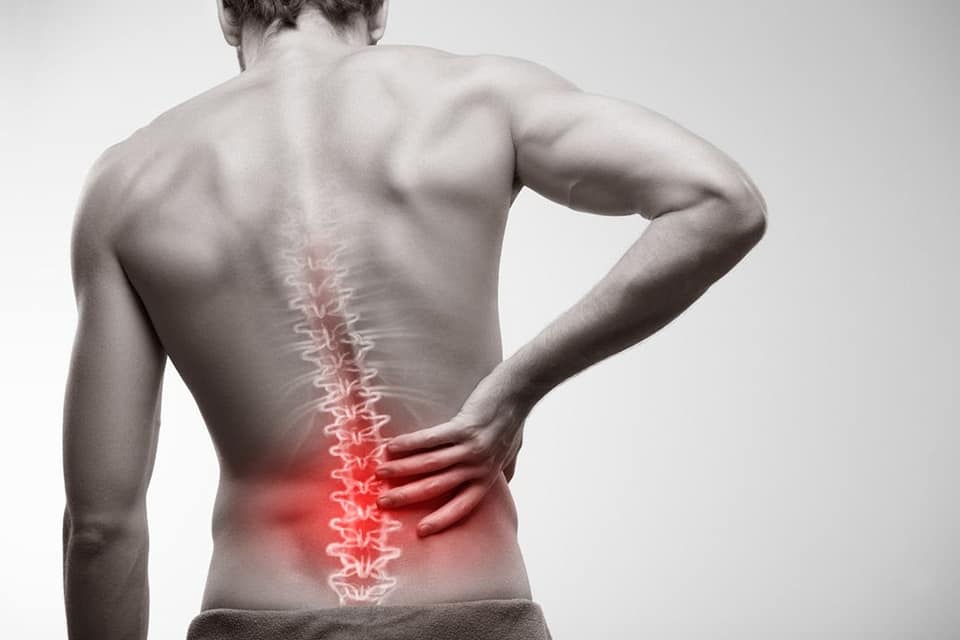
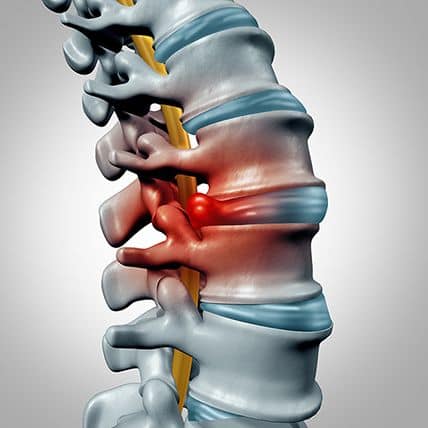
One notable effect of PEMF is its ability to increase the production of ECM. As mentioned, the extracellular matrix is compromised in intervertebral disc degeneration, and PEMF actively encourages the creation of ECM, effectively reversing a key physiological mechanism of disc degeneration. Research conducted both in vitro and in vivo has demonstrated this remarkable ability. Moreover, evidence suggests that short-term treatments can halt or slow the degeneration of a disc.
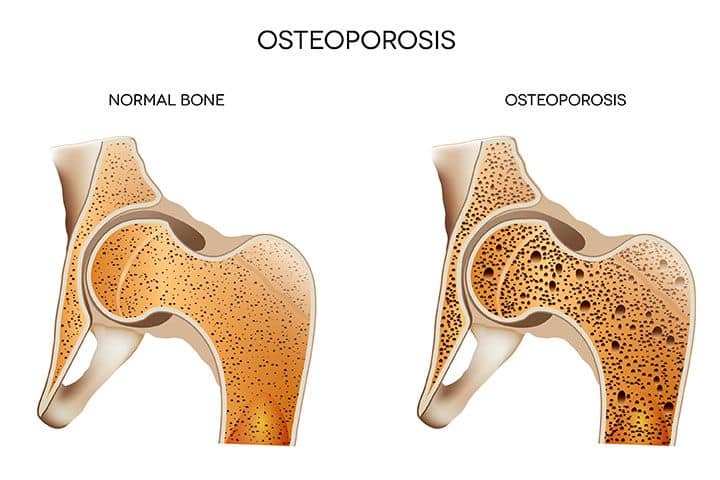
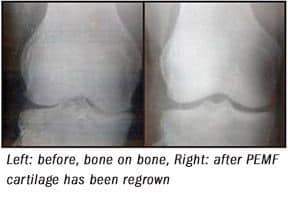
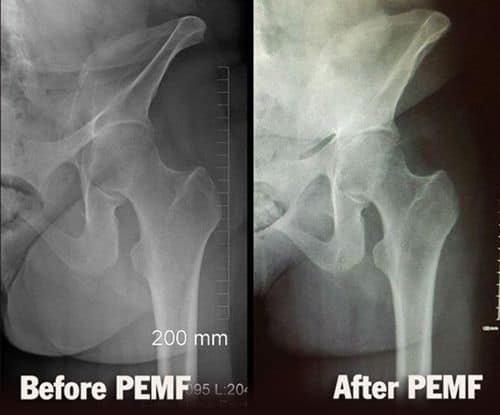
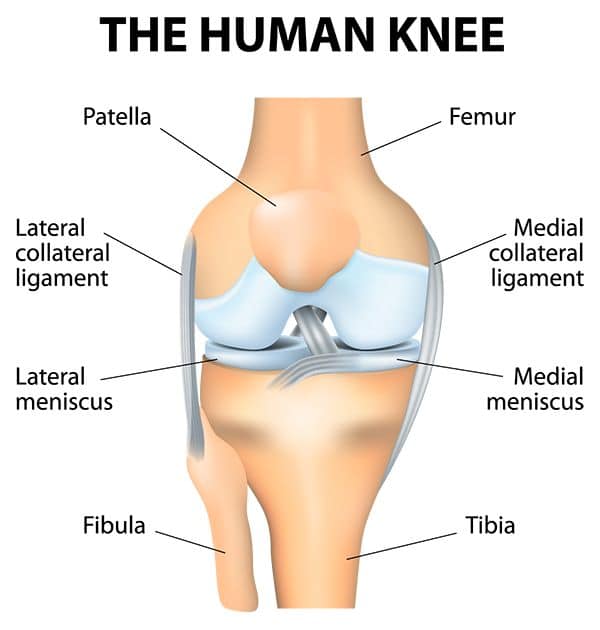


Our cells perform several essential functions, including generating energy, removing waste, repairing themselves, and carrying out specialized tasks based on their type. For these functions to be carried out successfully, cells need to move ions and electrolytes. PEMF therapy gives your cells an extra “boost,” promoting the movement of these ions and electrolytes.










Numerous studies have explored the effectiveness of Pulsed Electromagnetic Field (PEMF) therapy for treating depression. Frequencies around 10 Hz have demonstrated long-term neurodegenerative effects. PEMF therapy boosts motivation without the need for antidepressants, supports overall wellness, and may even extend lifespan.
Transcranial Direct Current Stimulation (tDCS) and Repetitive Transcranial Magnetic Stimulation (rTMS) have been extensively studied for their effects on dementia and cognitive decline related to conditions such as Alzheimer’s and Parkinson’s disease. PEMF therapy represents a new generation of electrotherapy, offering higher effectiveness and a non-invasive approach, as PEMFs can penetrate deeper into the body. This therapy is convenient for use both at home and in therapy centres. Remarkably, the same device that improves sleep can also aid in neuro-rehabilitation, pain relief, stress recovery, and wound healing.
In contrast, sleep medications often lead to residual drowsiness and can be dangerous with long-term use, leaving individuals feeling listless and unfocused in the morning, which often results in an increased reliance on caffeine. However, with a proper PEMF therapy routine, many users report experiencing clarity and energy immediately upon waking. Typically, just 30 minutes of BioBalance PEMF therapy before bedtime is sufficient. Whole-body and brain stimulation through PEMF therapy may alleviate issues like brain fog and depression.
PEMF therapy enhances brain health and helps combat anxiety, depression, brain fog, and other common issues in modern lifestyles. Research and reviews indicate that PEMF therapy is effective as a mood enhancer and in treating major depressive disorders. Studies show that the anti-depressive effects of PEMF technology can surpass those of traditional antidepressants. The FDA has approved PEMF therapy for treating depression in both the United States and Canada, and it is widely accepted in Eastern Europe and the European Union.
When applied using devices such as PEMF pads or pillows, the effects of PEMF therapy can mimic those of transcranial magnetic stimulation (rTMS). By stimulating the brain with pulsating magnetic fields, PEMF therapy improves circulation and corrects neurochemical imbalances that contribute to depression.
PEMF therapy enhances cellular respiration and nutrient absorption, helping to balance hormonal functions related to serotonin (which promotes calmness, serenity, optimism, and self-confidence), dopamine (which fosters excitement, motivation, and energy), and cortisol (the stress hormone that activates our response when needed).
Incorporating regular PEMF therapy into your routine can be convenient and offer long-term benefits. It enhances both mental and cognitive performance, extending beyond mere relaxation. Additionally, PEMF therapy alleviates inflammation in brain tissues, similar to its effects on other body parts. Brain inflammation can contribute to brain fog, cognitive decline, depression, stress, and anxiety. Research indicates that, with the right PEMF frequencies, it may be possible to reverse these challenges and improve brain health in as little as two weeks.
Research suggests that brain function noticeably begins to decline around age 40. Furthermore, nearly 17 percent of individuals over 65 may experience mild cognitive impairments, such as difficulty concentrating, finding the right words, focusing, or misplacing everyday items, like car keys.
Recent studies indicate that brain fog—a condition lying between normal functioning and serious disorders like dementia or Alzheimer’s disease—may indeed be reversible with PEMF therapy.


Studies have examined the effects of low-frequency, low-intensity PEMF on headaches, migraines, sleep disorders, stroke rehabilitation, and pain management.

Professionals and institutions involved in treating neurodegeneration, such as chiropractors, neurologists, physical therapists, orthopedists, and practitioners in regenerative medicine, along with wellness, senior care, and rehabilitation centers, will find PEMF therapy to be one of the most effective solutions for their clients’ needs.
Individuals suffering from various neurological issues—including back pain, sciatica, cervical pain, herniated or ruptured discs, multiple sclerosis, strokes, arthritis, Parkinson’s disease, and Alzheimer’s disease—can benefit significantly from pulsed electromagnetic field therapy.
In 2002, NASA’s PEMF scientist, Thomas J. Goodwin, reported that applying 10 Hz PEMF therapy to neural tissues resulted in a 400% improvement in regeneration. It is now understood that astronauts do not go to space without PEMF therapy, as a pulsed magnetic field is essential for the proper functioning of our body’s bioelectric system.
PEMF therapy can stimulate nerve regeneration, often evidenced by a temporary increase in pain followed by quicker long-term relief, even in chronic pain conditions. For anti-aging effects, PEMF therapy is a powerful tool that surpasses any nerve regeneration supplement. With prolonged use, research indicates that pulsed electromagnetic field therapy can lead to life-changing recovery without any side effects or risk of infection. Although PEMF therapy is highly effective and safe, awareness of its benefits is only now growing, leading more institutions, doctors, and baby boomers to embrace this innovative regenerative tool.


Pulsed Electromagnetic Field (PEMF) therapy has been repeatedly studied and applied in clinical settings as an alternative treatment for Parkinson’s disease (PD). This therapy is recognized for its neuroprotective effects, which may help alleviate the symptoms of Parkinson’s. To better understand how PEMF therapy works and its benefits, it’s important to first explore what Parkinson’s disease involves.
Parkinson’s disease is a common neurological disorder, and its incidence has been rising. Research links Parkinson’s disease to neurotoxicity, often attributed to significant pollution experienced during the 20th century.
According to the American Association of Neurological Surgeons, Parkinson’s disease is a progressive brain disorder caused by the degeneration of nerve cells in a brain area known as the substantia nigra. This degeneration disrupts hormonal and neurotransmitter functions, leading to symptoms such as tremors, rigidity, decreased flexibility, slowed movement, and impaired balance and coordination. Experts believe that this area of the brain becomes hyperactive due to the loss of dopamine in individuals with Parkinson’s.
PEMF therapy involves the application of safe, non-invasive pulsating magnetic fields to promote regenerative and functional improvements. When these fields are applied to the brain—a process known as transcranial magnetic stimulation—they enhance cellular oxygenation by improving circulation and stimulating mitochondria (the powerhouses of cells). These effects help accelerate cellular regeneration and repair.
PEMF therapy devices have evolved over more than six decades of research, supported by thousands of studies and numerous clinical trials. Various terms are used to describe brain-stimulating magnetic fields, including T-PEMF (transcranial PEMF), PEMF, TMS (transcranial magnetic stimulation), rTMS (repetitive transcranial magnetic stimulation), and EMS (Electro-Magnetic Stimulation). While these technologies share similarities, they primarily differ in intensity and coil design. Therefore, when researching the treatment of Parkinson’s disease with PEMF therapy, it is essential to consider studies involving all these electromagnetic therapy technologies.
Several studies indicate that PEMF therapy improves both gross and fine motor functions, as well as cognitive abilities. Pulsed magnetic fields exhibit significant molecular effects that alter the reactivity of molecules (specifically free radicals). A reduction in free radicals can lead to decreased inflammation and a slowdown in age-related degeneration. Moreover, PEMF therapy has been shown to alleviate depression, which affects up to 40% of patients with Parkinson’s disease.
Research on the effects of PEMF therapy for Parkinson’s disease has been published since the early 1990s.
In 1996, Dr. Reuven Sandyk from the Department of Neuroscience at the Institute for Biomedical Engineering and Rehabilitation Services of Touro College in New York treated a 73-year-old patient with a 10-year history of Parkinson’s disease using PEMF therapy. Remarkably, within a week of treatment, the patient experienced a near-complete disappearance of tremors, start hesitation, and freezing of gait. Additionally, the patient regained the ability to draw better and could sign their name again.
In 1999, Dr. Sandyk discovered that AC PEMF therapy improved olfactory function in individuals with Parkinson’s disease. He found that 7 Hz stimulation effectively addressed olfactory dysfunction, a symptom often overlooked in treatment. Improvements in the sense of smell and yawning are significant indicators of disease status, and their enhancement suggests the treatment is effective.
Dr. Sandyk has published multiple studies and is considered a pioneering researcher in exploring the effects of PEMF therapy on Parkinson’s disease. In addition to the findings mentioned, he also noted improvements in speech impairment and restless leg syndrome as additional benefits of PEMF therapy.
A joint research review published in 2015 investigated the mechanisms and therapeutic applications of electromagnetic therapy in Parkinson’s disease. Conducted by reputable researchers from Italy, Mexico, and the UK, the review concluded that PEMFs improve symptoms of Parkinson’s disease, including tremors, slowness of movement, and walking difficulties. It emphasized that PEMF therapy is non-invasive, safe, and enhances the quality of life for patients with Parkinson’s disease. Another extensive review involving 470 Parkinson’s disease patients in 2015 concluded that rTMS effectively improves motor symptoms and tremor control in individuals with the condition.



For general well-being, sexual intimacy is vital since it offers physical as well as emotional advantages. Pulsed Electromagnetic Field (PEMF) treatment is a non-invasive and successful cure for erectile dysfunction (ED) since it can improve prostate health, lower blood pressure, increase happiness, reduce the risk of heart disease, improve sleep quality, and balance hormones. By removing obstructions and boosting blood flow, this treatment helps to repair correct blood vessel operation and improve tissue quality.
Many guys over 50 will find their prostates have grown. The walnut-sized prostate gland generates prostatic fluid, a major constituent of semen. The prostate can reach the size of a lemon by 60, which could constrict the urethra and bladder. PEMF therapy employs energy waves to decrease prostate inflammation and boost blood flow. Enhanced blood flow helps to oxygenate the tissues, foster the development of strong blood vessels, and so lower aberrant tissue development. Enhanced circulation can help to lessen symptoms including frequent and urgent urination, a sense of incomplete bladder emptying, and a diminished urine stream.
By raising nitric oxide levels, PEMF therapy stimulates the synthesis of growth factors, hence decreasing inflammation and enhancing vascular function. Furthermore strengthening nerves, this treatment helps to repair old injuries, improve heart health, and extend lifespan.
Managing Stress
Acting straight on the neurological system, glands, cells, tissues, and organs, PEMF treatment has been demonstrated to alter the body’s stress reactions. By inhibiting the activation of the sympathetic nervous system and adrenal glands, PEMF treatment helps the body better control stress. It might also help to correct emotional responses tied to stress and lower excitability of the neurological system. Long-term PEMF therapy might help the body to adjust and remodel tissues that are too sensitive to ongoing or severe stress, therefore reducing their responsiveness over time.


By improving peripheral circulation and oxygenation, PEMF therapy strengthens the body’s own defenses. Stress on our muscles, joints, and organs—all of which are made up of cells, the basic building blocks of life—will cause our bodies damage. Stress and damaged cells lose their electrical charge, which causes less energy, discomfort, inflammation, swelling, stiffness, and finally, disease and sickness.



General well-being depends on good digestive health. At the cellular level, PEMF (pulsed electromagnetic field) treatment has a special capacity to help digestion. Electromagnetic fields can activate the body’s “rest and digest” reaction, the parasympathetic nervous system. This important mechanism speeds metabolism and improves digestion. The gastrointestinal tract is formed of cells, just like any other organ; hence, PEMF therapy can successfully treat a great variety of digestive problems. Cells can repair, revitalize, and self-regulate once they are energized. Maintaining a good digestive system depends on combining PEMF treatment with a healthy lifestyle—that is, eating less processed foods, controlling stress, and resolving energetic imbalances at the cellular level.
Many symptoms and diseases can emerge when the digestive system is not working as it should, hence pointing to a compromised gastrointestinal system. Among these conditions are:
– Gastroesophageal Reflux Disease (GERD)
– Gallstones and Celiac Disease
– Crohn’s Disease:
– Ulcerative Colitis
– Irritable Bowel Syndrome (IBS)
– Hemorrhoids, diverticulitis, leaky gut
– Anal cracks
Restoring digestive health depends on resolving these problems.

Directly and indirectly, PEMF treatment could improve heart health. Because of how it raises blood pressure and at worst even causes heart attack, stress is a significant risk factor for heart disease. Most people manage stress in damaging ways like binge eating, drinking, and smoking that only increase risk of heart disease; PEMF ® THERAPY is often used to naturally relieve stress and is FDA authorized therapy for stress, anxiety, and depression.
One of the main causes of heart disease is lack of activity, thus being active is required to help to avoid it. By improving mobility and increasing the range of motion, PEMF helps to supplement exercise. Additionally helps to reduce swelling, inflammation and pain.
Another main cause of heart disease is a sedentary lifestyle; hence, physical activity is vital for prevention. By enhancing mobility and range of motion, PEMF treatment can help with physical activity. Furthermore helps to lessen pain, reduce swelling, and lower inflammation. By improving cellular oxygenation and dispersing oxygen throughout the cardiovascular system, PEMF therapy promotes general health.
Preventing, postponing, or reducing symptoms of several physiological disorders is possible using this treatment. Moreover, PEMF treatment helps to improve overall cellular health and supports healthy cell function. Many studies have proven the possible advantages of PEMF therapy for heart health, therefore it is a drug-free, non-invasive choice to improve cardiovascular well-being.

The kidneys are essential organs that act as biological filters, removing metabolic waste from the blood and transferring it to the urinary bladder. These bean-shaped organs perform several critical functions that support overall health, including balancing electrolytes and producing certain hormones.
When kidneys become damaged, the condition can worsen, leading to chronic kidney disease (CKD). Kidney failure represents the final and most severe stage of CKD, often referred to as end-stage renal disease (ESRD). Individuals with kidney failure typically require dialysis or a kidney transplant to survive, as their kidneys function at only 10 to 15 percent of their normal capacity.
The symptoms of early-stage kidney disease can be subtle and challenging to identify. They may include:
– Decreased urine output
– Fluid retention, leading to swelling in the limbs
– Shortness of breath
Early detection and treatment of chronic kidney disease are crucial for preventing progression to kidney failure. Research suggests that Pulsed Electromagnetic Field (PEMF) therapy is a safe and non-invasive option for treating CKD and preventing kidney failure.
How Does PEMF Therapy Work for Kidney Failure?
Chronic kidney disease can progress to kidney failure if kidney damage continues to worsen. PEMF therapy may help lower the risk of kidney failure by effectively addressing CKD.
PEMF therapy can promote the body’s natural healing process of the damaged kidneys. Through the increased motion of ions and electrolytes, PEMF therapy can raise ATP levels and help kidney cells increase their energy by up to 500%. In addition, PEMF therapy can open up the membrane channels of cells to help them absorb enough nutrients and remove metabolic waste easily and quickly. In this way, PEMF therapy can stimulate the damaged kidney cells to rebalance and repair themselves wherever necessary.
PEMF therapy has been shown to reduce inflammation and injury associated with chronic kidney disease by activating A2a receptors. The adenosine A2a signaling pathway is a powerful regulator of anti-inflammatory and immunosuppressive responses. Through these receptors, PEMF therapy facilitates the conversion of macrophages from pro-inflammatory to anti-inflammatory types, promoting the resolution of inflammation and tissue restoration in damaged kidneys. It also enhances the function of podocytes, decreases proteinuria (the presence of excess protein in urine), and reduces pro-inflammatory cytokines in mesangial cells. Furthermore, PEMF therapy helps inhibit renal interstitial fibrosis, benefiting individuals with chronic kidney disease.
In the trial, four volunteers underwent PEMF therapy for 30 minutes three times a day for two weeks while continuing their existing medications without any changes. Researchers analyzed urinary spot collections and found reductions in proteinuria. This observational study demonstrated that PEMF therapy could be a promising option for patients suffering from chronic kidney disease.

Scoliosis is a spinal disorder that affects approximately 3% of the population, with severity levels ranging from mild to debilitating. Although there is no definitive “cure” for scoliosis, several conventional treatments are available, including braces, pain management strategies, and surgery. Integrative medicine offers alternative options that can complement or sometimes replace these conventional treatments. These alternatives may help alleviate pain, prevent the condition from worsening, improve mobility and stability, and promote healing after surgery.
Scoliosis is characterized by a sideways curve or twist in the spine. Typically, the upper (thoracic) spine curves to the right, while the middle (thoracolumbar) or lower (lumbar) spine can curve either to the right or left. The exact cause of scoliosis remains unclear; however, certain conditions, such as cerebral palsy and muscular dystrophy, increase the likelihood of developing this disorder.
Scoliosis is categorized based on the age at which it begins. The most common type is adolescent idiopathic scoliosis, which occurs in individuals aged 10 to 18 with no clear cause. Other types include infantile idiopathic scoliosis (ages 0-3), juvenile idiopathic scoliosis (ages 4-9), and congenital scoliosis, which arises from spinal birth defects. Scoliosis can also develop later in life due to neuromuscular conditions or the degeneration of facet joints in the spine, known as degenerative scoliosis. Nonstructural or functional scoliosis occurs when the spine curves due to misalignments in other parts of the body, such as differences in leg length, and can often be corrected by addressing the underlying issue.
Often, it is others who first notice the development of scoliosis in a person. A curving spine can lead to noticeable signs such as an uneven waist, elevated hips or shoulders, a more prominent shoulder blade, or differences in ribcage appearance when bending over. As the curvature increases, scoliosis can result in:
– Back pain
– Muscle spasms in the back
– Inflammation in back joints and muscles
– Degeneration of intervertebral discs and facet joints
– Reduced range of motion
– Altered movement and gait due to misaligned hips (for example, one hand hitting against the hip while the other swings wider)
– Increased fatigue in the back, hips, and core muscles
– Decreased spinal motion
– Breathing difficulties
– Cardiovascular issues due to structural pressure on the heart
– Lowered self-esteem
Currently, scoliosis is not considered preventable, as most cases are classified as idiopathic. Treatment options vary depending on the severity of the condition, which is assessed according to the degree of spinal curvature. Curves of 10 degrees or less often go unnoticed. If scoliosis is detected, physicians typically recommend check-ups 2 to 3 times a year to monitor the condition.
If the curvature worsens rapidly or reaches 20 degrees, physicians may prescribe some form of intervention. The most common treatment is a back brace. While braces do not realign the spine, they can effectively prevent the curve from worsening. Depending on individual circumstances, a full-time brace (16+ hours daily) or a nighttime brace (8+ hours nightly) may be recommended.
In more severe cases, surgery may become necessary. For children who are still growing and experiencing rapid worsening, one option is a vertebral tethering system. This involves placing screws along the outer edge of the curving spine, with a strong yet flexible cord threaded through them. The cord is gradually tightened over time to straighten the spine. Another surgical option includes placing an expandable rod alongside the spine, which can be mechanically lengthened via remote control as the child grows.
For adolescents and adults who have reached their full height (usually around age 14 for females and 16 for males), spinal fusion is another surgical option. This procedure fuses two or more vertebrae together to prevent further movement and curvature. Bone or similar material is placed between the vertebrae, and metal rods, hooks, and screws are used to stabilize the spine during healing and fusion. This type of surgery is generally reserved for cases where the curvature exceeds 40 to 50 degrees.
While it is encouraging that 90% of individuals with idiopathic scoliosis will not require braces or surgery, it is important to note that those affected by scoliosis can still experience side effects, including pain and mobility challenges.


PEMF (Pulsed Electromagnetic Field) therapy uses pulsed magnetic fields targeted at specific areas of the body to promote healing at the cellular level. This therapy effectively addresses back pain, regardless of its underlying cause. Additionally, PEMF therapy can influence pain response centers in the brain, alleviating long-term emotional suffering and enhancing brain function.
Research indicates that PEMFs are both safe and effective for use on the brain, even at high intensities. They can help repair brain tissue and regulate brain frequency functions, calming overactive signals.
Two notable studies have showcased the significant potential of PEMFs in reducing pain among participants with lumbar radiculopathy and whiplash syndrome.
In the first study, researchers examined 192 patients—100 with lumbar radiculopathy (characterized by pressure on a spinal nerve root) and 92 with whiplash syndrome. One group received standard medications, including diclofenac and tizanidine, in conjunction with magnetic field treatment twice a day for two weeks. The other group received only the medications. Results showed that pain relief was significantly greater in the group receiving magnetic field treatments.
In a second randomized controlled clinical trial, researchers evaluated the effectiveness of a PEMF system in managing pain caused by lumbar radiculopathy due to spinal disc disease. Lumbar nerve root compression can lead to radiating pain in the hips, legs, and feet. The study concluded that PEMF therapy is an effective conservative treatment for lumbar radiculopathy resulting from lumbar disc prolapse, successfully reducing nerve root compression.
PEMFs often yield quick and dramatic results in treating acute back pain. Many patients report rapid relief after using a PEMF system. While it is encouraging that acute pain can be alleviated quickly, PEMFs are also frequently utilized for chronic back pain, which is more persistent and can cause significant distress.
PEMFs can greatly enhance the daily lives of patients suffering from chronic back pain. Even if complete pain relief is not achieved, the intensity of the pain can diminish considerably, allowing patients to return to their normal activities. Moreover, PEMFs can be applied to the brain to calm the limbic system, helping to prevent the brain from sending exaggerated pain signals


One notable effect of PEMF is its ability to increase the production of ECM. As mentioned, the extracellular matrix is compromised in intervertebral disc degeneration, and PEMF actively encourages the creation of ECM, effectively reversing a key physiological mechanism of disc degeneration. Research conducted both in vitro and in vivo has demonstrated this remarkable ability. Moreover, evidence suggests that short-term treatments can halt or slow the degeneration of a disc.






© 2025 HELP HEALP HOSPITAL. All Rights Reserved. | Powered by Kindness.